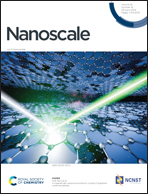Advances in flame synthesis of nano-scale architectures for chemical, biomolecular, plasmonic, and light sensing
Abstract
Flame spray pyrolysis (FSP), a key technique under the broader category of flame aerosol synthesis, is being increasingly explored for the design of advanced miniaturized sensor architectures with applications including chemical, biomolecular, plasmonic, and light sensing. This review provides an overview of the advantages of FSP for the fabrication of nanostructured materials for sensing, delving into synthesis strategies and material structures that meet the increasing demands for miniaturized sensor devices. We focus on the fundamentals of FSP, discussing reactor configurations and how process parameters such as precursor compositions, flow rates, and temperature influence nanoparticle characteristics and their sensing performance. A detailed analysis of nanostructures, compositions, and morphologies made by FSP and their applications in chemical, chemiresistive, plasmonic, biosensing, and light sensing is presented. This review identifies the challenges and opportunities of FSP, exploring current limitations and potential improvements for industrial translation. We conclude by highlighting future research directions aiming to establish guidelines for the flame-based design of nano-scale sensing architectures.

- This article is part of the themed collection: Recent Review Articles


 Please wait while we load your content...
Please wait while we load your content...